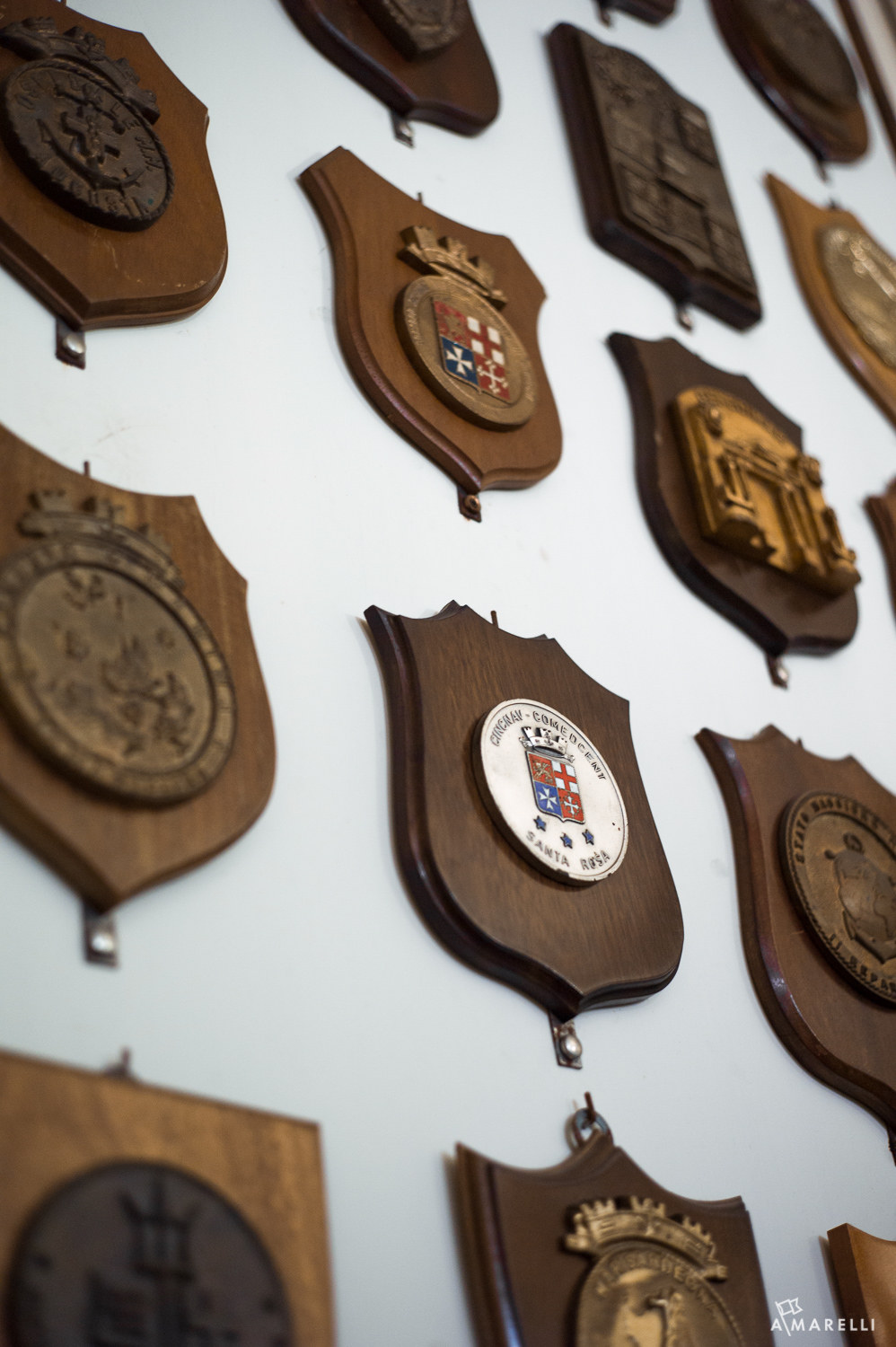
Only a few minutes from the madness of San Marco Square is one of the few museums in Venice that you can have all to yourself. Two enormous anchors flank the doorway like a hipster tattoo just waiting to happen. But inside, you will discover a world of nautical treasures that continue to influence the worlds of design, fashion, and luxury to this day. While the massive ships of the past might be gone, their power to seduce us remains as strong as ever.
When you pass through the giant doors of the museum, it feels like going below deck of a massive clipper. The reflecting sun is blocked as your eyes adjust to dark rooms lined with canons in perfect rows. The Museo Storico Navale (or Naval History Museum) is located just outside of the Arsenale. More famous these days for its art installations, the Arsenale was the power house that used to create the great ships of the Venetian Armadas. Today a portion of it is still used by the Italian Navy, while the rest plays host to installations from the Art and Architecture Biennale.
Let’s face it … many city-run history museums can be pretty lame. Often under funded and coated in dust, their collections feel more like a hoarder’s garage than the treasures we expect to find in a museum, which is why I half expected the museum to be a dud. But I was shocked to find the depth of their collection. One part military history, another part naval fashion, the museum was like the raw material inspiration for anyone with a love of the ocean.
So much of our daily lives can actually be traced to naval history. Whether it is the striped shirts of sailors, designed to stand out against the vast ocean or the graphic brilliance of flags used to communicate at great distances, we all live under the influence of the sea. Here at the museum the DNA of naval design is unpacked and on view.
So much of our daily lives can actually be traced to naval history.
The first discovery was a full scale Lenta Corsa or human torpedo. These underwater attack torpedoes were pioneered by the Italian frogman and used during World War II. Two men could be silently launched to plant mines on the hulls of ships and escape into the darkness of the sea. Strapped on their wrists were often compasses and watches produced by Officine Panerai. Originally the watches were only produced for the military, but in the 1990s the company and its history were resurrected and released to the public. As part of their promotions, Panerai features a painting by Rudolfo Claudus.

Along the walls surrounding the frogman suits and torpedoes were a collection of military awards. Looking at all of the plaques arranged on the wall, I got the sense that the awards were invented simply to experiment with graphic design. The variety of crosses, compasses, and other nautical icons was outstanding. It seemed as if the awards existed more for the artists who made them than the officers who received them.
Upstairs the museum revealed a collection of clothing that covered over 300 years of naval fashion from Italy to Japan. Clearly a result of a the long reach of the Venetian Navy, the clothing reflected influences from around the Mediterranean and beyond. There were beautifully preserved officers jackets, endless rows of decorative patches, and even a few outfits brought back from Japan. But once you finish with the fashion, the heart of the museum is revealed.
For anyone who ever build models as a child, the models in their collection are some of the best in the world. From 16th scale pirate ships to Submarines and fishing vessels, every corner over your naval imagination plays out in real life. The detail of the woodwork in each model is amazing. It is hard to fully appreciate what Venice must have felt like filled with these ships, but the models get us half way there. The rest of the picture is left up to our imaginations, which continue to be tickled by a maritime history.
For the Venetian Empire, there is no turning back to the clock. Its navy was taken apart with losses to the French and the unification of Italy in the late 1800s. Its lagoon no longer filled with sailors, but this does not mean the influence of the sea is gone too. Life at sea continues to influence life on land. Even though airplanes and motorboats quietly removed these grand ships from service, our imaginations continue to feed on pieces of naval history left behind. So before you saddle up to a bar for your Aperol Spritz, spend a little time exploring the bones of Venetian naval history. When you emerge, I guarantee the water gently lapping the walls of the canals will start to sound different to you.
So before you saddle up to a bar for your Aperol Spritz, spend a little time exploring the bones of Venetian naval history. When you emerge, I guarantee the water gently lapping the walls of the canals will start to sound different to you.